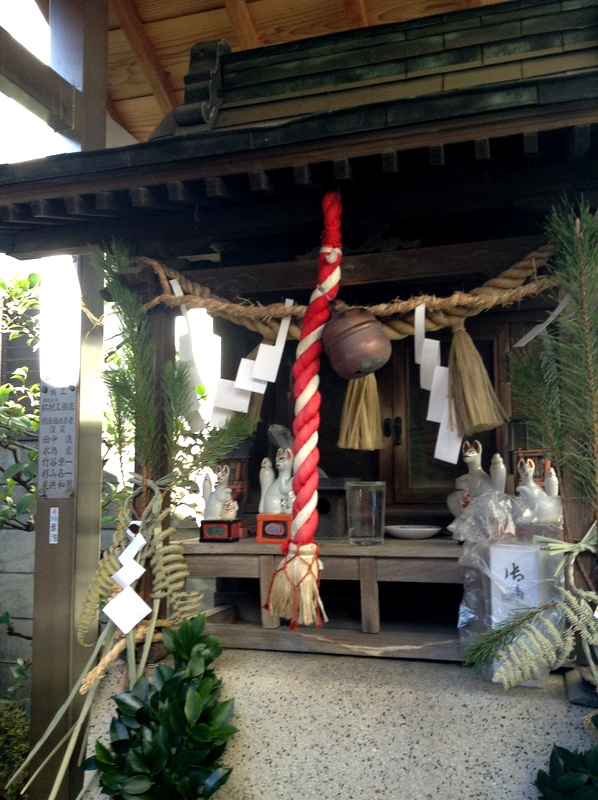Japan!: Shrines
Brandy posted an excellent question in the comments the other day- “I don’t know a lot about Japanese religious/spiritual life; what are the shrines “to” or “for”?” I had the same questions when we got here, so he’s what I know. Â (Keep in mind, I’m no expert!) 🙂
To begin with, there are two main religions in Japan, Shinto and Buddhism. Â Most people who participate in Shinto rituals also participate in Buddhist rituals, and some consider Shinto to be a lifestyle rather than a religion. The religions are so connected that most Buddhist temples have Shinto shrines on the same premises.
Shinto is fascinating, because it is completely indigenous to Japan, and one of its major goals  is to connect present day Japan with its past.  The word Shinto translates as The Way of the Gods, but Gods in this instance encompasses deities, essences, and spirits. The general word for these is kami.  Everything has a kami- people, animals, rocks, mountains, rivers, lightning, wind, everything.  (Interestingly, gods from other religions, including Buddha, Christ, and Allah are also considered kami, which makes sense, really.)
Certain places are considered sacred for the purposes of connecting with the kami.  A shrine’s purpose is to enshrine the kami. Sometimes this is done through the use of some kind of symbolic item, a mirror or statue, which is not the kami itself  but which the kami has been invited to inhabit. In this case, there is a building  that houses the item, and is not entered except by Shinto priests performing rituals. The doors  are usually closed, so most people don’t see the object representing the kami. In other cases, the shrine is near or on the kami itself- for example, a mountain- and so there wouldn’t be a building to house the kami.  There are shrines for all sorts of kami, from rocks and waterfalls to ancestors or even figures from legends.  (I very rarely know what kami is enshrined in the shrines we visit, since I can’t read Japanese.)
There is also usually a structure for worship- a place to make an offering and pay respect and/or pray to the kami. Some shrines also have place for ritual cleansing of your hands and mouth. You would visit this wash area first, using a ladle to get some water and pour it over one hand then the other. Then you take a little sip of water and spit it out again. (At some shrines we’ve been to they’ve said not to do the mouth part, others have said to do it.)
After you cleanse yourself, you would go up to the shrine, put a coin in the offering box  and ring the bell a couple of times. Then you take a step back, bow two times, clap two times, and then pray if you like.
Shinto has no scriptures, and no sense of absolute right and wrong. Practitioners aim to receive help from friendly kami, and keep unfriendly kami appeased with offerings and prayers.  There are Shinto rituals for births, marriages, and various life milestones. Death is considered a source of impurity, so there aren’t Shinto cemeteries, and most funerals are held with Buddhist rituals.
In general, when we visit shrines we don’t “worship”. Â We’ve talked to the girls and they know to be reverent and respectful. They’ve wanted to wash their hands, and I’ve let them (and I usually do myself) , as purifying yourself to enter someone’s sacred space is only appropriate. Â We did let them make an offering, ring the bells, and make a wish when we visited the shrine at midnight on New Years Eve, because that was a larger cultural experience to be a part of. But in general, it would just be a kind of game for them, and so we don’t.
I hope that answers any questions- if there are more, feel free to post them!





Maryanne, thanks for summing that up — so much better than I would have. Likewise, your on-hand experience in Japan (not only yourself, but with your family in various ceremonies and events) adds more wealth to your travelogue.